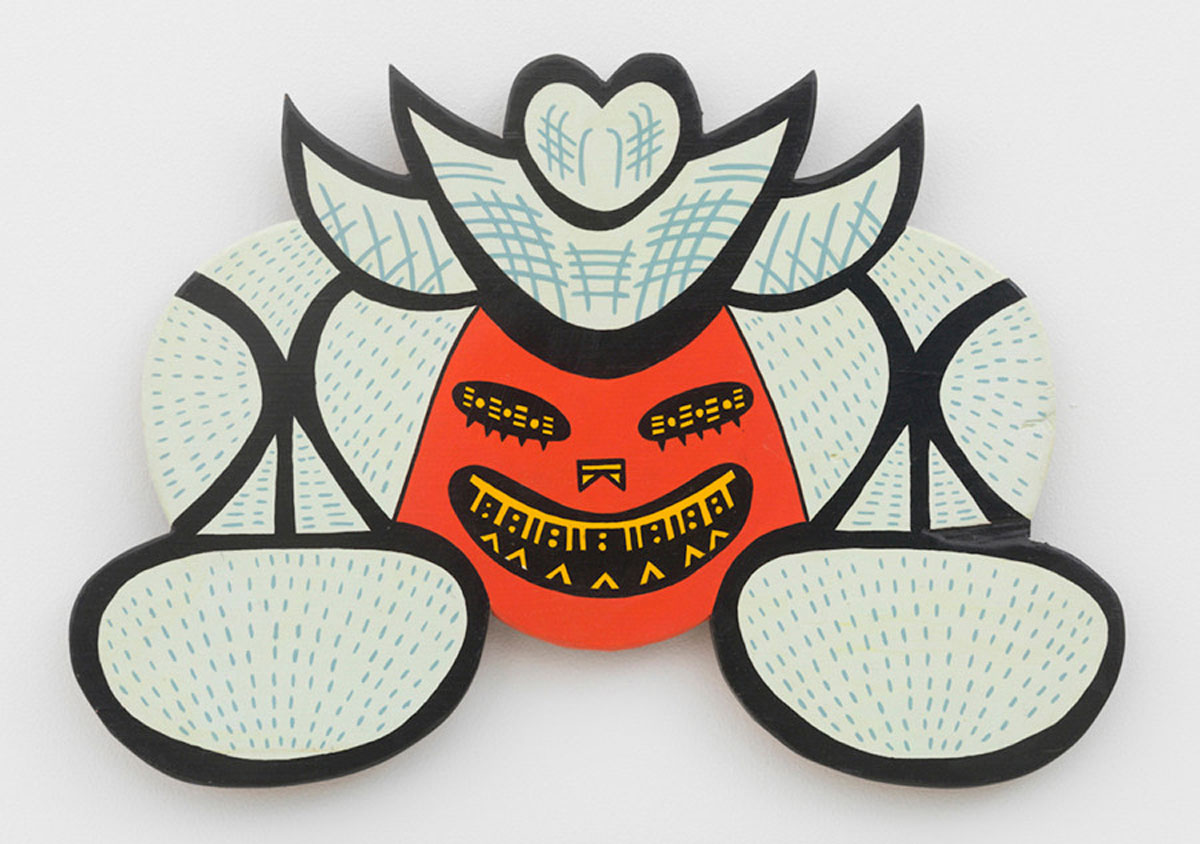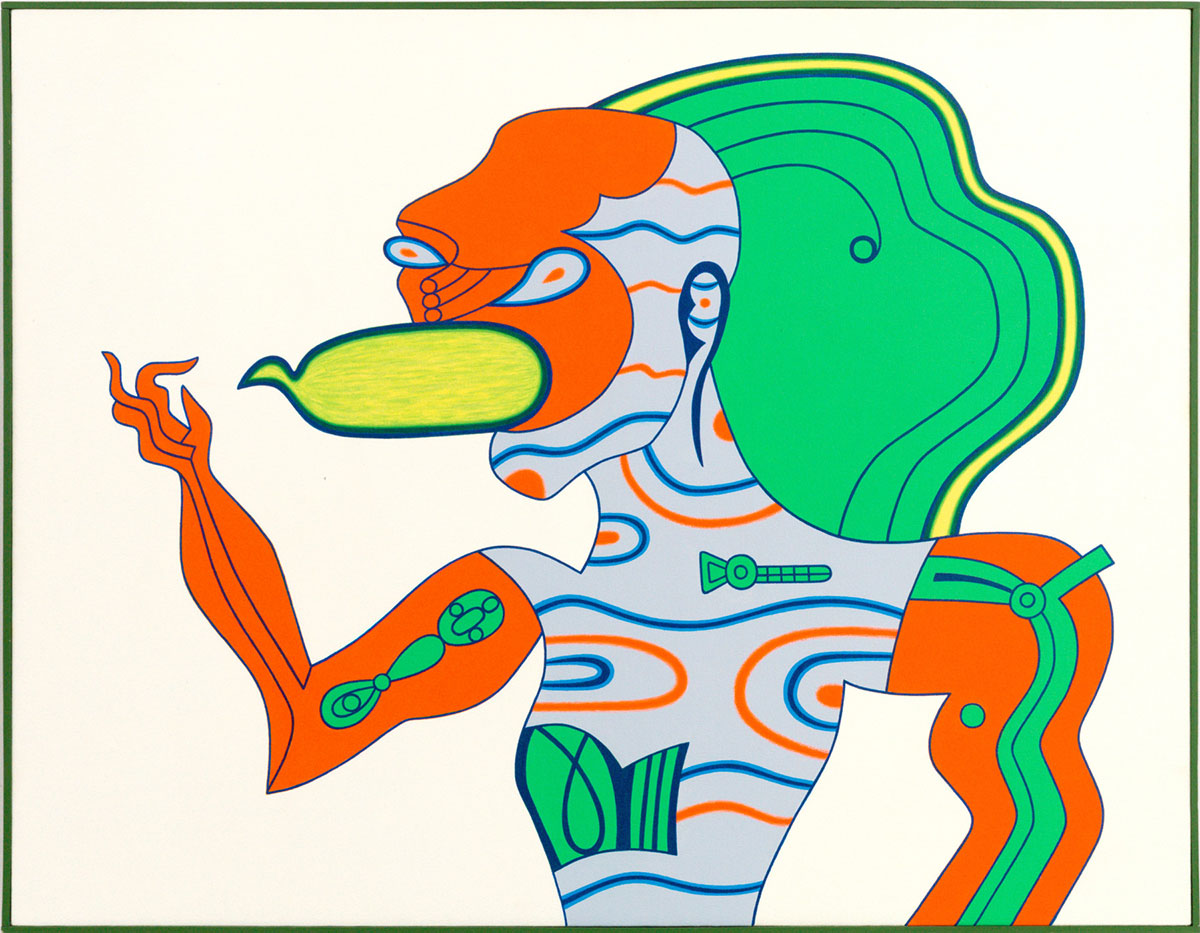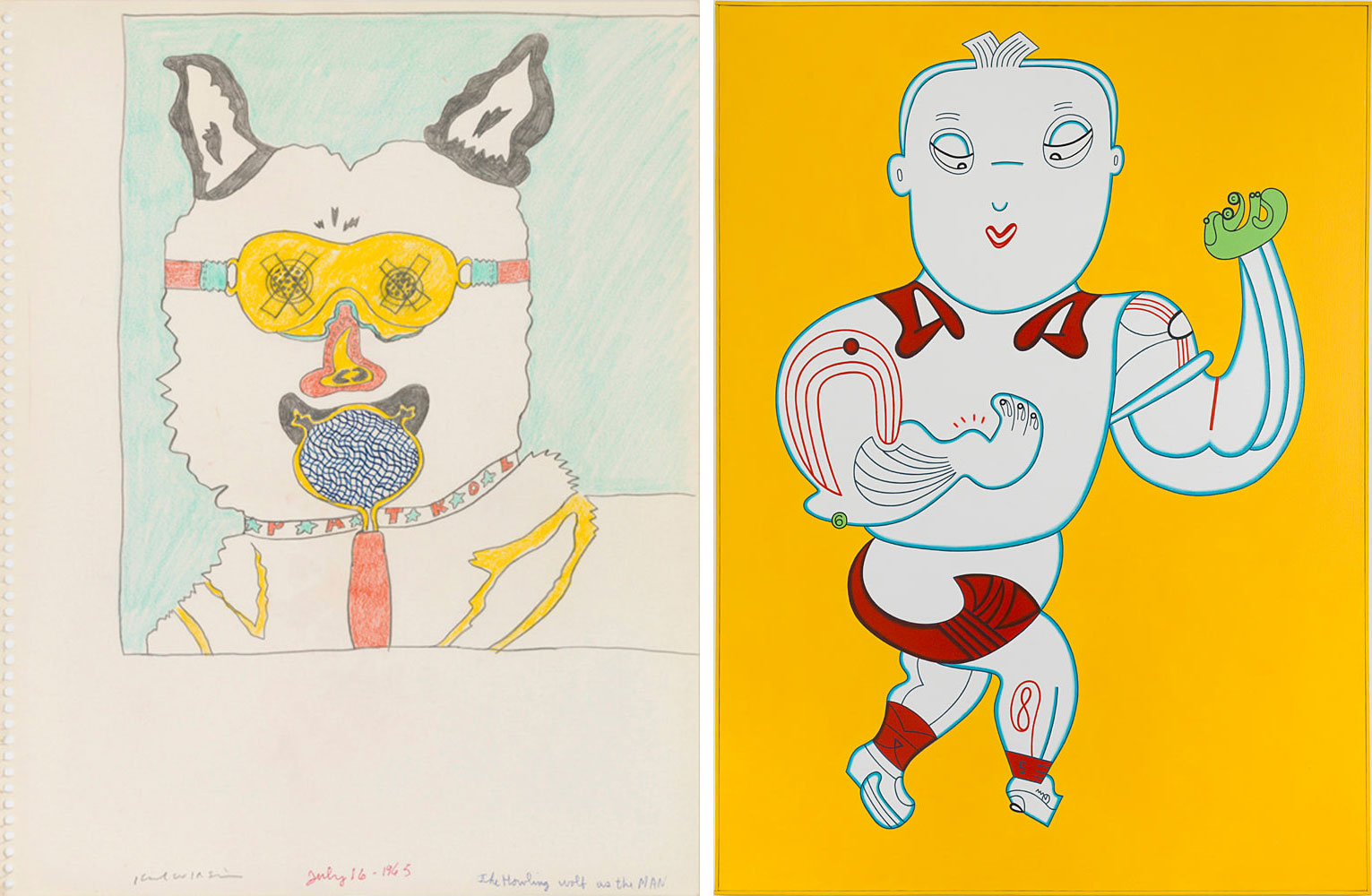ART CITIES: N.York-Karl Wirsum
 Karl Wirsum was an American artist. He was a member of the Chicago artistic group The Hairy Who, a group of representational artists associated with the School of the Art Institute of Chicago who exhibited at the Hyde Park Art Center in the late 1960s. and helped set the foundation for Chicago’s art scene in the 1970s. Although he was primarily a painter, he also worked with prints, sculpture, and even digital art.
Karl Wirsum was an American artist. He was a member of the Chicago artistic group The Hairy Who, a group of representational artists associated with the School of the Art Institute of Chicago who exhibited at the Hyde Park Art Center in the late 1960s. and helped set the foundation for Chicago’s art scene in the 1970s. Although he was primarily a painter, he also worked with prints, sculpture, and even digital art.
By Dimitris Lempesis
Photo Derek Eller Gallery Archive
The exhibition “Eye Adjustment: 1963-2020” features over forty paintings, sculptures, and drawings made between 1963 and 2020 created by Karl Wirsum and is a collaboration of Derek Eller Gallery with Matthew Marks Gallery. The two exhibitions together comprise the largest presentation of the artist’s work in New York to date. Karl Wirsum first came to prominence in the mid-1960s as one of the founding members of the Hairy Who and became known for his vividly colorful and “unabashedly figurative” work. Drawing inspiration from newspaper comic strips, Mesoamerican pottery, and Japanese woodblock prints, Wirsum created a distinctly graphic style. As the artist described, “The flat color seems to clarify and accentuate the shapes and forms in a more abstract way, independent of what the shapes represent.” With fragments taken from the real world and riddled with word play, Wirsum’s work is defined by layered references both enigmatic and humorous. His process was one of recollection and invention, what the artist called “an image stream of ideas” pulled from his “memory bank”. The works in the exhibition span Wirsum’s six-decade career. Early paintings include “Memory Mask” (1964), which evokes an advertisement for before and after dental reconstruction, and “The Odd Awning Awed” (1966), a deteriorating face informed by medical disease drawings rendered in bright, undulating patterns inspired by fabric awnings at a local amusement park. In later works, such as “Fat Snowball’s Chance” (2013), Wirsum depicts the idiom with a stylized Devil in an arctic landscape posing with a snowball perched on his shovel. Wirsum’s paintings on shaped panel, which he referred to as “flying cutouts,” elaborate kites, and paper mâché sculptures further animate the artist’s explorations of the body and activate the surrounding environment. Several of Wirsum’s works on paper, including sketchbook drawings filled with marginalia, pristine images on larger sheets, and studies for paintings are included. Drawing was foundational for Wirsum, as both an independent art form and a preparatory medium. An imaginative space in which observed places, people, and objects could become something entirely different, Wirsum explored a single idea in numerous drawings. In the artist’s own words, “It’s very much the idea of personalizing. Taking an inspiration, something that you’re enthused with and then bringing your own force to it.”
Karl Wirsum was raised on the South Side of Chicago and even as a child was drawn to rhythm and blues music and the Maxwell Street Market, an open-air flea market. Inspired by his visual and sonic experiences and memories, drawing poured out of Wirsum in much the same way as sound does from an improvising musician. And like improvised music, his direct drawings rarely show correction or revision. He often depicted musicians in his artwork and took inspiration from source material he scavenged at the flea market. Wirsum enrolled at the School of the Art Institute in 1957 and was the first of the Hairy Who artists to graduate. Wirsum studied with Kathleen Blackshear, an eccentric art historian who mentored Whitney Halstead, an instructor important to the development of the rest of the Hairy Who. It was through Wirsum’s friendship with Don Baum, the exhibition chairman of the Hyde Park Art Center, that he became part of the Hairy Who. Baum recommended that Wirsum be included in the small group exhibition that Jim Falconer and Jim Nutt proposed to him, and it was Wirsum who unintentionally coined the name Hairy Who. The six artists of the Hairy Who (Jim Falconer, Art Green, Gladys Nilsson, Jim Nutt, Suellen Rocca, and Karl Wirsum) decided that the best way to find success was to exhibit their work together, and as a group they began mounting unconventional displays of bright, bold graphic work in the mid-1960s. Over a period of four years they transformed the art landscape of Chicago, injecting their new and unique voices into the city’s rising national and international profile. At the time of the group’s first exhibition in 1966, Wirsum had already established a sophisticated, original style. His paintings largely featured central, frontally oriented, often nearly symmetrical figures delineated with strong outlines filled in with unmodulated hues. His iconic painting “Screamin’ Jay Hawkins” epitomizes this style.
Photo: Karl Wirsum, Pumpkin Girl, 1976, Acrylic on wood, 11.5 x 16.75 x .5 inches, © Karl Wirsum, Courtesy the artist and Derek Eller Gallery
Info: Derek Eller Gallery, 300 Broome Street, New York, NY, USA, Duration: 16/3-20/4/2024, Days & Hours: Tue-Sat 11:00-18:00, www.derekeller.com/, & Matthew Marks Gallery, 523 West 24th Street, New York, NY, USA, Duration: 16/3-20/4/2024, Tue-Sat 10:00-18:00, www.matthewmarks.com/



Right: Karl Wirsum, Thumb Thwack, 1986, Acrylic on canvas with painted wood frame, 50.5 x 35,25 inches, © Karl Wirsum, Courtesy the artist and Derek Eller Gallery


Right: Karl Wirsum, Great Skates III, 1976, Acrylic on board with painted wood frame, 31.125 x 25.25 x 2 inches, © Karl Wirsum, Courtesy the artist and Derek Eller Gallery

Right: Karl Wirsum, Turning the Tables on My Bald Head, 2013, acrylic on canvas with painted wood frame, 47.5 x 40 inches, © Karl Wirsum, Courtesy the artist and Derek Eller Gallery
